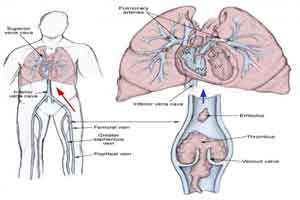- Home
- Editorial
- News
- Practice Guidelines
- Anesthesiology Guidelines
- Cancer Guidelines
- Cardiac Sciences Guidelines
- Critical Care Guidelines
- Dentistry Guidelines
- Dermatology Guidelines
- Diabetes and Endo Guidelines
- Diagnostics Guidelines
- ENT Guidelines
- Featured Practice Guidelines
- Gastroenterology Guidelines
- Geriatrics Guidelines
- Medicine Guidelines
- Nephrology Guidelines
- Neurosciences Guidelines
- Obs and Gynae Guidelines
- Ophthalmology Guidelines
- Orthopaedics Guidelines
- Paediatrics Guidelines
- Psychiatry Guidelines
- Pulmonology Guidelines
- Radiology Guidelines
- Surgery Guidelines
- Urology Guidelines
Study analyses difficulty in inserting left double-lumen endobronchial tubes in small-statured women

Left double-lumen endobronchial tube (DLT) sizes are selected using tracheal diameters and left mainstem bronchial diameters (LMBDs) determined from chest radiographs or computed tomography (CT) scans. In Western women, 35-Fr or 37-Fr DLTs are often selected. However, difficulties can be encountered when inserting 32-Fr or 35-Fr DLTs in Japanese women. Mika Sato, Kenji Kayashima et al investigated success rates for 32-Fr or 35-Fr DLT insertion in Japanese women and determined the causes of unsuccessful DLT insertion.
The authors searched anaesthesia records of Japanese women aged ≥20 years who underwent thoracic surgery with 32-Fr or 35-Fr DLTs between April 2010 and March 2015 in our hospital. In the successful group (SG), patients were intubated using the initially selected DLTs. By contrast, in the unsuccessful group (UG), the DLT size had to be changed. The Mann–Whitney U-test and Fisher's exact test were used to compare groups.
Study Results showed that the SG included 149 (96.1%) of 155 cases of 32-Fr DLT use and 119 (95.2%) of 125 cases of 35-Fr DLT use. Patient height was significantly lower in the UG than in the SG for the 35-Fr DLT (P = 0.0036). In seven of 12 unsuccessful group patients (three for 32-Fr and four for 35-Fr), the transverse diameters of cricoid cartilages were smaller than the DLTs' tracheal diameters, thereby preventing passage through the cricoid cartilages.
The authors concluded that along with LMBDs, transverse diameters of cricoid cartilages based on CT scans or ultrasonogram findings may help in selecting the appropriate left DLT size.
The study is titles Difficulty in inserting left double-lumen endobronchial tubes at the cricoid level in small-statured women: A retrospective study and has been published in the May 2017 issue of Indian journal of anesthesia, the official journal of Indian Society of Anaesthesiologists
To read the full article, click on the link :
Sato M, Kayashima K. Difficulty in inserting left double-lumen endobronchial tubes at the cricoid level in small-statured women: A retrospective study. Indian J Anaesth [serial online] 2017 [cited 2017 Jun 6];61:393-7. Available from: http://www.ijaweb.org/text.asp?2017/61/5/393/205987
The authors searched anaesthesia records of Japanese women aged ≥20 years who underwent thoracic surgery with 32-Fr or 35-Fr DLTs between April 2010 and March 2015 in our hospital. In the successful group (SG), patients were intubated using the initially selected DLTs. By contrast, in the unsuccessful group (UG), the DLT size had to be changed. The Mann–Whitney U-test and Fisher's exact test were used to compare groups.
Study Results showed that the SG included 149 (96.1%) of 155 cases of 32-Fr DLT use and 119 (95.2%) of 125 cases of 35-Fr DLT use. Patient height was significantly lower in the UG than in the SG for the 35-Fr DLT (P = 0.0036). In seven of 12 unsuccessful group patients (three for 32-Fr and four for 35-Fr), the transverse diameters of cricoid cartilages were smaller than the DLTs' tracheal diameters, thereby preventing passage through the cricoid cartilages.
The authors concluded that along with LMBDs, transverse diameters of cricoid cartilages based on CT scans or ultrasonogram findings may help in selecting the appropriate left DLT size.
The study is titles Difficulty in inserting left double-lumen endobronchial tubes at the cricoid level in small-statured women: A retrospective study and has been published in the May 2017 issue of Indian journal of anesthesia, the official journal of Indian Society of Anaesthesiologists
To read the full article, click on the link :
Sato M, Kayashima K. Difficulty in inserting left double-lumen endobronchial tubes at the cricoid level in small-statured women: A retrospective study. Indian J Anaesth [serial online] 2017 [cited 2017 Jun 6];61:393-7. Available from: http://www.ijaweb.org/text.asp?2017/61/5/393/205987
chest radiographsComputed tomographyCT scansDLTdouble lumen endobronchial tubeendobronchial tubesIndian Journal of anesthesiaIndian Society of Anaesthesiologistleft mainstem bronchial diametersLMBDsthoracic surgeryultrasonogram
Next Story
NO DATA FOUND

Disclaimer: This site is primarily intended for healthcare professionals. Any content/information on this website does not replace the advice of medical and/or health professionals and should not be construed as medical/diagnostic advice/endorsement or prescription. Use of this site is subject to our terms of use, privacy policy, advertisement policy. © 2020 Minerva Medical Treatment Pvt Ltd